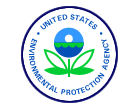
| National Risk Management Research Laboratory | ||

|
|
|||||||||
|
U.S. EPA Superfund Innovative Technology Evaluation
(SITE) Program
This document is available in the Adobe Acrobat PDF Format. Click here for information about Portable Document File (PDF) Formats. or Click here to directly download the Acrobat Reader. (To view the PDF, it is recommended that you use the latest version of Acrobat Reader.)
Atomic Energy of Canada, Limited (AECL), Chalk River, Ontario, Canada, developed a process that uses chemical pretreatment and ultrafiltration to remove trace concentrations of dissolved metals from wastewater, contaminated groundwater, and leachate. The key feature of the process is its ability to selectively remove metal contaminants and produce a volume-reduced water stream for further treatment and disposal. The AECL process treats industrial wastewater, groundwater, leachate, and surface runoff contaminated with trace levels of toxic heavy metals, such as cadmium, lead, mercury, uranium, manganese, nickel, chromium, and silver. The process can treat influent with dissolved metal concentrations from several parts per million (ppm) up to about 100 ppm. In addition, the process removes other inorganic and organic materials present as suspended or colloidal solids. Wastewater enters the prefilter through the feed holding tank, where suspended particles are removed from the feed. The filtered waste stream is then routed to conditioning tanks where the solution pH is adjusted. Water-soluble macromolecular compounds are then added to the wastewater to form complexes with heavy metal ions. Next, a relatively high molecular weight polyelectrolyte is added to the wastewater to form selective metal-polymer complexes. The polyelectrolyte quantity depends on the metal ion concentration. The wastewater then passes through a cross-flow ultrafiltration membrane system by way of a 6 gpm recirculation loop. The membranes retain the metal complexes (concentrate), while allowing uncomplexed ions to pass through the membrane with the filtered water. The filtered water (permeate) is continuously withdrawn and discharged, while the concentrate stream, containing most of the contaminants, is recycled through the recirculation loop until it meets the target concentration. After reaching the target concentration, the concentrate stream is withdrawn for further treatment, such as solidification. The AECL process was accepted into the SITE Emerging Technology Program in 1988. During initial bench-scale and pilot-scale tests, the AECL process successfully removed cadmium, lead, and mercury. These results were used to design and construct the mobile unit. The mobile unit was tested at Chalk River Laboratories and a uranium mine tailings site in Ontario, Canada. The field evaluation indicated that process water characteristics needed further study.
Posted October 1, 1999
|
|
|
|
|
|